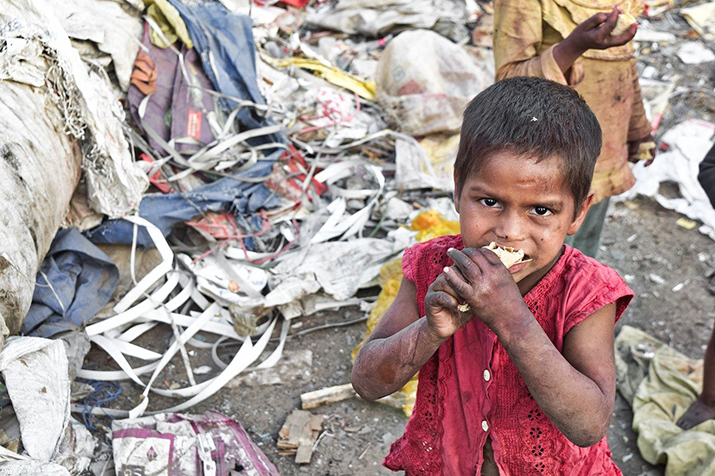REPORT OF THE GNAFC
CONFLICTS ARE THE MAIN CAUSE OF WORLD HUNGER
In the West we refer to appetite, in the less developed world one refers to "hunger". But the word itself says little. In order to clarify its meaning it needs further specifications and adjectives. For example, it can be "chronic" implying a serious case that occurs when a person is unable to consume sufficient food for a prolonged period and therefore cannot guarantee a normal and active life. But it gets worse: acute food insecurity, the state in which the inability to consume adequate food puts an individual's life or livelihood in immediate danger. The measurement of these human conditions is scientific and is based on internationally accepted parameters capable of identifying the characteristics of the term "extreme" hunger.
For us, where the risks related to obesity are kept under control, a lack of food is something very far away, usually linked to the stories of grandparents, who, however, when reminiscing, season the stories about empty plates with bombs, invasions, retreats and resistances. In short, conflicts. Where there are wars there is hunger. Here we do not have fighting, but in other places yes, and there the question is very topical and the prospects are very bad. The number of people living in acute food insecurity and in urgent need of assistance reached the highest figure in the last five years in 2020. The alarm comes from the report published by the Global Network Against Food Crises (Gnafc), an international alliance of United Nations and European Union agencies, which study the situation together with governmental and non-governmental bodies.
Acute food insecurity has continued to grow unabated since 2017
A few numbers clarify the situation better. The problem affects 155 million people in 55 countries and territories. The reasons are mainly related to conflicts and economic shocks. The increase compared to 2019 is 20 million, a figure that raises a distressing alarm about a worrying trend. Acute food insecurity has continued to grow relentlessly since 2017. In short, Covid has played its part, but the problem had already arisen earlier and was not adequately addressed.
But since there is no equality even among the poor, it is necessary to go even deeper into the evaluation of poverty. Among the 155 million hungry there is a minority of just over 130,000, who live at a level of food insecurity referred to by experts as "catastrophic". They are found mainly in Burkina Faso, South Sudan and Yemen. A little better, so to speak, there are another 28 million people considered at an "emergency" level, one step away from starvation. Fortunately, many lives have been saved by humanitarian interventions that have prevented the spread of famine. As usual, it is the weakest who pay the highest price: in the 55 countries or territories hit by food crises and presented in the report, there are over 75 million children under the age of five found to have a development deficit, more than 15 million of which are perished.
It is no longer news but Africa is the continent most affected, with 98 million people at risk. However, the crisis does not spare other areas of the world such as Yemen, Afghanistan, Syria and Haiti, which share the sad distinction of being included in the top ten among the countries with the worst food emergencies recorded last year.
The incriminated phenomena have always been the same for some decades. War is in first place. Conflict is the main reason that has plunged about 100 million people into acute food insecurity, a huge increase compared to 77 million in 2019. In second place, economic shocks, including Covid-19, passed from 24 million people affected in 2019 to over 40 in 2020. Extreme climate events instead put about 16 million people at risk, 18 fewer than in 2019.
Will it get better in the future? Unlikely. «The outlook for 2021 is bleak. Conflicts, restrictions due to the pandemic causing economic hardship and the persistent threat of adverse climatic conditions will probably continue to be behind the food crises ”, explained the experts commenting on the data.
Among the 155 million people at risk, more than 130,000 live at a level of malnutrition referred to by experts as "catastrophic”
You could put all the blame on the virus and go ahead as has always been, but in reality the pandemic has revealed already existing fragilities in the global food system, emphasizing the need to put more equitable, sustainable and resilient processes in place. In short, if we want to aim for sustainable development capable of feeding 8.5 billion people on a regular basis in 2030, we need to radically transform an economic process that works with those who have an ‘appetite’ and neglects those suffering from ‘hunger’.








